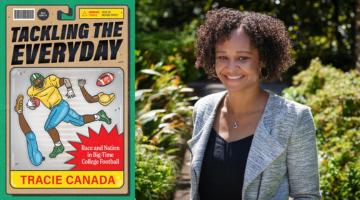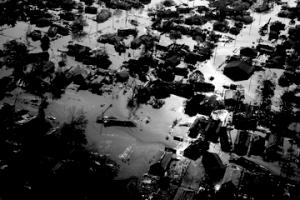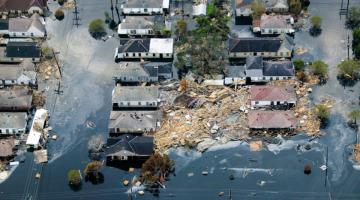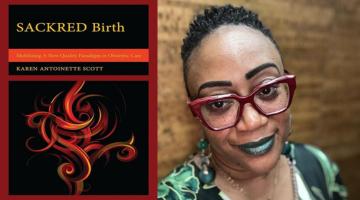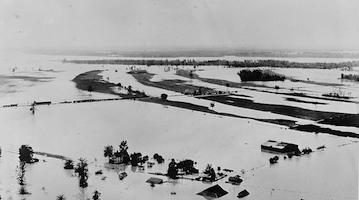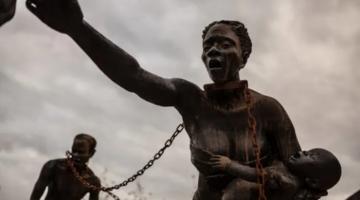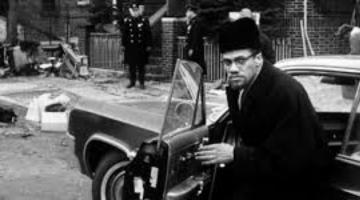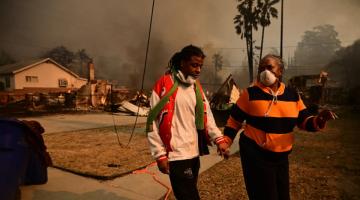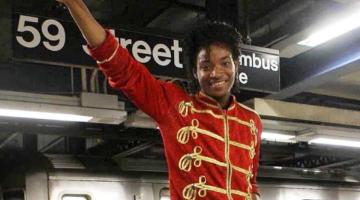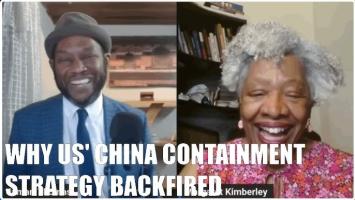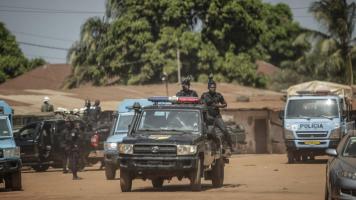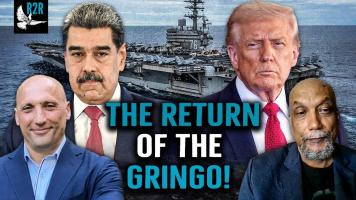The appraisal of American universities as liberal institutions remains one of the purest examples of the elasticity of the English language.
After witnessing Columbia University’s spectacularly cowardly (if entirely unsurprising) capitulation to the bullying edicts of the Trump regime, it is nice to see several US universities push back. Harvard, Princeton, MIT, Cornell, and others among the US academic super-elite have finally stood up to the Krazy Karotene King and offered a simple, defiant “no” to his monarchical over-reach.
Yet while one gets the feeling of “better late than never,” that feeling is also tempered by a “why now?” – and a “why not earlier?” Individually and collectively, US universities did absolutely nothing to assist or protect the nearly one thousand foreign students who have been disappeared, detained, and deported over the past couple of months. But even before Trump, under the Biden regime, US universities were already enabling attacks on Palestinian students and faculty protesting against the zionist entity’s months-long genocide of the Palestinian people. We should remember how, not so long ago, these same universities, including Harvard, brutally suppressed anti-genocide protest. With little concern for free speech or academic integrity, they cast even the mildest critique of zionism or defenses of Palestine as “anti-semitic” while unceremoniously firing professors, expelling students, and dismantling academic units that US zionist organizations such as Canary Mission, AIPAC, and the Betar group found objectionable.
In Harvard’s case, they drove out the university’s president Dr. Claudine Gay, a Black woman, not because she was pro-Palestine, but because her groveling wasn’t zionist enough. Harvard, lest we forget, also fired the staff of the Harvard Slavery Remembrance program, effectively curtailing its activities before Trump asked them for anything.
Some have said that the US university is in danger of losing its “soul.” It is a silly claim. The US university never had a soul. Yet such a claim about the university is based on a misguided vision of the university’s history. And this vision is based on a belief that the current crisis in the US academy signifies some seismic structural shift, some great historic rupture with the university’s putatively progressive past. In this neoliberal moment, we could say that the US university has as much soul as any other corporation—which is to say, it is a spiritually empty, morally suspect, cynically opportunistic entity.
Many mistake the minimal concessions over the past few decades by the US university, when it was forced to racially diversify, as an institutional revolution. We saw the emergence of a few prominent departments, programs, institutes, and centers, and the hiring of a few nonwhite faculty, as a totalizing victory of the forces of academic good. We did not see that while such gains were not system-wide, they often served to benefit the system: the university could promote the “radical” brands of a handful of brash, entrepreneurial scholars as way of obscuring the fact that the bulk of the research remained tied to western imperialism in toto, while the true stakeholders of the university were real estate developers, hedge fund managers, and the Pentagon, all of them profoundly white supremacist.
In 1971, as Black Studies was ascendant and predominantly white universities rushed to fund new programs and hire new professors, the scholar Addison Gayle, Jr. (June 2, 1932 – October 3, 1991) wrote a considered, thoughtful, but profoundly radical essay on the long history of the university, titled “Racism and the American University.” Gayle, Jr. is perhaps best known as the editor of the era-defining anthology, The Black Aesthetic. He should also be remembered as an editor, a serious critic of Black literature, an accomplished literary biographer, and an insightful memoirist. (One gets a sense of both Gayle, Jr. 's dynamism and his flaws from Roseann P. Bell’s profile in the 1979 collection Sturdy Black Bridges: Visions of Black Women in Literature).
“Racism and the American University” displays Gayle, Jr.’s chops as a historian. It is a counter-intuitive piece that demolishes the long-standing myths of the progressive university. Gayle, Jr. describes the transformations in the governance of US universities from their origins in the eighteenth-century to the 1970s, showing how church, state, and capital have competed for the control of the university and its mission, with the students largely being left behind. The one constant in this struggle has been the fundamental racism of the university. From the birth of the US university until the present, the exclusion of Black and Brown folk – and the promotion of racist knowledge justifying that exclusion – has remained consistent.
“Far from being liberal, the universities have been the most conservative, reactionary and racist institutions in the American society,” Gayle, Jr. writes. He gives as an example his own employer, the City College of the City University of New York, where supposedly liberal white faculty pushed back against the entrance of Black and Puerto Rican students and fought the formation of a viable Black Studies program. Gayle, Jr. places the blame squarely on the faculty, the conservative, largely white gate-keepers who emerged as the most powerful force in university governance. Today, while the faculty old guard still hold sway, the issue is also one of the “shareholders” – those wealthy alumnae and racist trustees who don’t want to see “their” university taken over by the savage hoards, who see even the most toothless programs for racial redress as challenges to white supremacy. And who, it need not be said, are threatened by the mere presence of Black, Moslem, and indigenous students and faculty, no matter their pathetic numbers.
Addison Gayle, Jr.’s “Racism and the University” provides a needed perspective on the long, racist history of the US university. The essay allows us to refuse the exceptionalization of this moment, to instead understand the crisis of the university within a long US and western white supremacist history. We reprint it below.
Racism and the American University
Addison Gayle, Jr.
Not since the eighteenth century has the American university been embroiled in more conflict than at present. In 1750 the conflict centered around control: Would the university continue to be dominated by church denominations or would control pass to the states? In the famous Dartmouth College case of 1819 in which Daniel Webster appeared as attorney, the ruling of the court established the right of private sectarian universities to exist free of state control. “The way was therefore open,” notes Russell Blaine Nye in The Cultural Life of the New Nation, “for public and private institutions of higher education to develop separately, with the victory to the most powerful. In the ensuing struggle for educational dominance of the United States, the religious institutions had by far the heavier guns.”
The control of American higher education by religious denominations lasted until the middle of the nineteenth century. American colleges were little more than satellites of the Presbyterians, Methodists, and Baptists. They existed primarily to inculcate morals, dispense ethical values, and propagandize on behalf of God and nation. Disdaining the plight of the poor, they were primarily concerned with the sons of the wealthy whom they attempted to provide with “a body of knowledge that would assure them of entrance into a community of education leaders.” In Political Inquiries, written in 1791, Robert Coram voiced objections to this policy: “Education must not be … confined to the children of wealthy citizens; it is a shame, a scandal to civilized society, that part only of the citizens should be sent to colleges and universities.”
Church domination of the institutions of higher learning meant that the university would be non-secular in mood as well as control. Ostensibly modeled after the universities of Europe – more specifically those of England – the early institutions did not encourage an atmosphere conducive to the free exchange of ideas. In a series of lectures given in 1852, John Henry, Cardinal Newman, proposed the basis for such an atmosphere, but these were found irrelevant in a society which did not believe, with the Cardinal, that knowledge, “considered in a religious aspect, concurs with Christianity a certain way, and then diverges from it, and proves in the event, sometimes its serviceable ally, sometimes, from its very resemblance to it, an insidious and dangerous foe.”
The church leaders considered knowledge unrelated to Christianity “a dangerous foe,” and they kept a tight rein on college curricula. Their autocratic control led to serious controversy. “The first revolt against the traditional curriculum began in the middle of the eighteenth century Expanding horizons in both scientific and non-scientific knowledge called for a broader collegiate education for broader purposes. American colleges had failed to reflect the changing character of American life…”
The failure “to reflect the changing character of American life” is a censure under which the twentieth century university still labors. The blame does not lie with the university alone. In the latter part of the eighteenth century, it reacted to intense pressure, not from students, but rather from the church fathers, politicians and wealthy citizens. Each of these factions wanted the university to cater to their interests, thus necessitating certain changes in the curricula. The church demanded a continuation of moral and ethical training: therefore, its members sought retention of curricula embodying moralistic themes. The politicians, acting out of a sense of nationalism, demanded a shift from the preoccupation with morals and ethics to the inculcation of ideals of patriotism. The university, which had traditionally reacted more favorably to the demands of outside special interest groups than it had to those of its own students, complied with all three demands. Thus, the curriculum of the nineteenth century university differed radically from that of previous centuries.
For the university, the consequences were grave. In conforming to the wishes of special interest groups outside its structure, it surrendered all possibility of existing as an independent institution devoted to the pursuit of knowledge. During the nineteenth century, it became the pawn of forces far more dangerously sectarian than the most dogmatic religious order. In the Southern states, the policy which determined the content of the curriculum was dictated by politicians. In other parts of the country, the institutions came under the dictatorship of wealthy alumni whose control was often as tyrannical as that of the Southern politicians.
By the end of the end of the nineteenth century, the university had ceased its attempts to become an independent agency for the dissemination of creative, independent thought. Outwardly it maintained its appearance of a cloistered monastery where wise monks, devoted to the pursuit of wisdom, discoursed with eager, inquisitive students; however, in reality, the university was the home of men whose political and religious attitudes were merely replicas of those in the world outside. The appraisal of American universities as liberal institutions remains one of the purest examples of the elasticity of the English language.
Far from being liberal, the universities have been the most conservative, reactionary and racist institutions in the American society. Like the tides, they demonstrate the remarkable ability to move back and forth with the varying times. After the Civil War, when the conservative movement dominated American politically, economically, and socially, the trend of the university was toward conservatism. When Franklin D. Roosevelt’s New Deal policies produced a new wave of liberalism, it executed an almost one-hundred-and-eighty-degree turn to the left. In one area only has the university maintained equilibrium throughout its history – the area of race relations.
There was no necessity to institute change in this area. The politics of the nation concerning Black people have changed little since the days of Reconstruction. No special interest group pressured the university to change policy or curricula in deference to Blacks. The “responsible” Negro leaders and their organizations, whose memberships usually include a large number of college professors, waged their war against state goverents, primarily in the South, and ignored the university. Always few in number, Black college professors found themselves (those who made the attempt) unable to effect change.
Dr. Du Bois, who attempted to institute the first Black Studies program in America, although he did not call it by that name, was stymied in his efforts by a conservative faction in American education led by Booker T. Washington. Washington, who had long been the darling of the educational establishment, supplied, through his philosophy and work at Tuskegee Institute, the rationale which enabled the university to continue along its well-established route. Long before Washington enunciated his educational formula for the Negro in “The Atlanta Exposition Addresss,” the men who controlled the institutions of higher education had put the theory into practice.
Washington was not an independent thinker. The policy he advocated and the formula he followed had been developed by General Armstrong at Hampton Institute. As a student at Hampton, Washington carefully observed the effect of industrial education upon Black and Indian students. He concluded that the Indians did not possess the capacity to learn technical skills, whereas Blacks showed great proficiency. No intellectual, having reached this conclusion and armed with a personal disdain for creative thought, he began to dream of a Black university in which the “practical and useful arts were to be taught.”
The business and educational establishments were willing to help him realize his dream. They founded normal schools in the South and community colleges in the North. The aims of both institutions were similar: train Blacks to be the servants and lackeys of white America. In the South this meant education designed to produce carpenters, maids, agricultural workers and petty businessmen; in the North, to produce nurse’s aides, orderlies, clerical helpers and lab technicians.
In addition, conforming to the ideals prevalent in the society outside its walls, the men from the universities developed not only the theories to justify their proposed educational program for Blacks, but also the theories which tended to validate the Black man’s [Sic] inferiority. A summary of the many arguments from university professors, Northland South, was supplied by the educator Thomas Pearce Bailey in 1913. Bailey wrote: “The white race must dominate. The Teutonic people stand for race purity. The Negro is inferior and will remain so. This is a white man’s country. No social equality. No political equality. In matters of civil rights and legal adjustments give the white man, as opposed to the colored man, the benefit of the doubt; and under no circumstances interfere with the prestige of the white race. In educational policy let the Negro have the crumbs that fall from the white man’s table. Let there be such industrial education fo the Negro as will best fit him to serve the white man. The status of peasantry is all the Negro may hope for, if the races are to live in peace. Let the lowest white man count for more than the highest Negro. The above statements indicate the leadings of providence.”
To say that Bailey reflected the attitude of every college education in America would be a gross distortion. To say that his opinions were held by a large number then and now is not. There have always been conscientious, dedicated men [sic] in the universities intent on moving it toward the fulfillment of its function of independent, creative education. Their attempts have been stifled, their idealism dissipated through their inability to deal with the Baileys who have the support of powerful interest groups, both in and out of the university. Men who hold Bailey’s sentiments wield power in many universities, and although their language differs from that of the former education (the City College of New York is an exception there, the Baileys have not been reluctant to declaim in the language and tone of their predecessor), their aims remain the same. Furthermore, riding a wave of conservative reactionism, today they are in a position to fulfill their aims.
The student rebellions of the past few years have been ineffective because the rebels have not realized this fact. Those who sought to change the university, Black and white, neglected to do their homework. They chose targets of little real substance. The college administrator no longer exercises power as he did in the seventeenth and eighteenth centuries. At that time, his word was law, he could dismiss instructors and students with impunity; he could set arbitrary standards and demand that they be adhered to; this was the final word on curriculum. He answered only to the church authorities, who were usually in complete accord.
When the universities came under more ruthless secular control in the nineteenth century, the erosion of the administrator’s power began. This change was completed by the institution of the tenure system, which allowed a group of individuals, reflecting the conservative nature of the society, to seize and maintain power. The result has been that, in the twentieth century, college presidents have become ceremonial, not policy-making positions, and the occupants of these positions have no more power than the students.
Real power resides in the hands of the faculty. It is they who set policy, determine curriculum content, and develop admission requirements. More often than not, they run the university in a manner more dictatorial and capricious than the early church fathers would have thought possible. They are men of limited vision and questionable capacity, whose ideas of education belong to the age of Aquinas and the Scholastics. They are young and old, Black and white, and their most suitable metaphor is Dr. Bledsoe, the college president in Ralph Ellison’s Invisible Man.
The controversy in higher education in the twentieth century centers around the arrogant use of faculty power to impede change and maintain the status quo in the political, economic and social areas of American life. This arrogant use of power, exercised in the interests of racism and reactionism, is, at present, nowhere exhibited more blatantly than at the City College of the City University of New York.
C.C.N.Y. has been designated–erroneously to be sure–as “a great liberal institution.” This was due in part to the policy of the college, enacted at its inception, of enrolling the children of white minority groups. At the same time and ever since, it has practically closed its doors to the children of the Black and Puerto Rican minorities who live in the neighborhoods surrounding its Gothic buildings. The greatest enrollment of Black students in the college’s history occurred in 1965, and the manner in which this token enrollment was effected evidences the power and racism of the faculty.
Despite the fact that Dr. Kenneth Clarke, the well-known psychologist and advocate of integration, has occupied a prominent position on the faculty of the college for close to ten years, the initial impetus to enroll more Black and Puerto Rican students came not from the apostle of integration but from two white men, Bernard Levy and Leslie Berger. With little encouragement from Dr. Clark and no help, the two educators conceived the Pre-Baccalaureate Program. The program, to paraphrase Berger, was designed to offer minority students from New York City’s ghetto areas an opportunity for a college education.
The program was begun during the summer when the majority of the senior faculty was on vacation. When the faculty returned to find the program in operation, in the fall of 1965 they began to develop stratagems to limit its effectiveness. Later, when the Pre-Bac program became the model for the S.E.E.K. (Search for Educational Excellence through Knowledge) Program, the opposition increased. The threat of even greater numbers of Blacks and Puerto Ricans brought forth new stratagems, this time designed to destroy the program.
The proposals ranged from creation of a new community college in Harlem to which the students could be transferred, to the purchase of the Music and Art High School for the incarceration of the S.E.E.K. staff and student body. Another proposal was to keep the students on campus but to give them special courses for the entire four years, at the completion of which they would receive special degrees. The most effective plan was developed under the auspices of the English Department. Of all the departments, the English Department faced a special dilemma. It had opposed the Vietnam war and gained a reputation–in matters which did not pertain to Blacks – of being liberal. To have rejected the students outright would have been to reveal the racism which the members had assured themselves they did not possess. To have accepted the students into the educational life of the department would have forced the members to reveal their own deficiencies in educational skills and techniques.
The English Department moved in the direction which has been sanctioned ever since by departments and colleges searching for ways to minimize contact between whites and Blacks in an educational setting. It created a special branch of the department and hired a special staff of Black teachers. It attempted to discourage white teachers who applied to teach in the program and offered them positions in the regular department instead. It frowned upon those of its own members who were committed to true education and demanded to teach S.E.E.K. students. Therefore, within the English Department there existed a separate program with a staff and student body composed primarily of Blacks and Puerto Ricans. Dr. Clarke, who resigned from the board of Antioch College due to an allegedly similar situation, retains his position on the faculty of C.C.N.Y.
During the uprising of 1969, Black and Puerto Rican members of the Student Coalition put forth as one of their five demands a greater voice in controlling the program. What they sought was the validation of the policy already being practiced by the English Department. Since the program was separate in every aspect except control, why not also relinquish this to Blacks and Puerto Ricans? In other words, extending the formula enacted by the English Department, why should a program primarily designed for Blacks and Puerto Ricans, which had been effectively transformed into a segregated program, not go all the way and become separate in every essential? The faculty balked. To maintain a separate program was one thing, to allow Blacks and Puerto Ricans to control it was another; however, with the exception of the question of control, the students and the faculty, to paraphrase William Black, were both of the same devilish party without even knowing it.
What began as an attempt to legalize existing policy quickly degenerated into a conflict between Black and white. Black and Puerto Rican faculty and students became the objects of the type of verbal abuse which does honor to the memory of Senator Vardaman of Mississippi, who took great pride in his extensive vocabulary of racial epithets. Students were called “animals” and “misfits,” faculty members were called “boys,” “girls” and “niggers.” The epithets were hurled by faculty members from the floor and rostrum during faculty meetings attended by Black and white students. Once, in my presence, the newly electing acting president, Joseph Copeland, referred to white students who supported the goals of the Blacks as “white trash.”
Racist attitudes, which had heretofore been visible only to individual Black and Puerto Rican students in classrooms when papers were returned or their examinations marked, flared into the open, as the faculty could no longer restrain itself. Much of it, to be sure, was occasioned by the student seizure of the south campus. But, this act alone does not suffice as an explanation of the terrible spectacle presented by college teachers shouting epithets at Black students, encouraging white students to display Nazi insignia, and performing with an hysteria and paranoia whose closest analogue is to be found in the lynch mobs, legendary in American history. The frenzied actions of the faculty mob were motivated by more threatening forces than the student occupation of buildings.
At the close of the fall semester of 1968, prior to the student revolt, the English Department hired Dr. Wilfred Cartey, the distinguished, internationally known scholar of Black history and culture, to institute a Black Studies Program. (During the turmoil when Professor Cartey was charged with being a tool of the Black Panther Party and having been brought to the college by this organization, the English Department did not attempt to clarify the issue or to refute the charges– the reason is clear: By that time, the English Department had had second thoughts about its choice.) Cartey was a scholar first, and with the keen analytical mind of the scholar; he divined the forces at work on the campus. They were the same forces that were at work on campuses throughout the nation. The rash of instant Black Studies Programs, ill-equipped, poorly organized and adequately staffed, is merely a ploy of contemporary racists to perpetuate the miseducation of Black students, a policy which has been the hallmark of the American university.
Few of these programs are worth the paper they are drawn on. Designed to benefit neither Black nor white students, their objectives are to remove the burden of educational responsibility from the shoulders of the older, tenured faculty. To be effective, a Black Studies program must be interdisciplinary. It must effect change in every liberal arts department in the university. In so doing, far from being, as Bayard Rustin insists, a cathartic exercise for Black students, such a program would radicalize the university and transform it into a truly educational institution.
To understand this statement, one must first be aware of the inadequacy of existing college curricula. In history courses on both the undergraduate and graduate levels, the contributions of Frederick Douglass, David Walker, Henry Highland Garnet, and Booker T. Washington to the making of the American nation are deleted; neither Phillis Wheatley, Paul Lawrence Dunbar, Claude McKay nor Langston Huhges are read or student in English courses. Students of sociology are not required to read Du Bois, E Franklin Frazier, [Robert C.] Weaver or Kenneth Clarke. The same omissions are repeated in political science, music, and economics.
A realistic Black Studies Program would therefore force such delinquent departments to restructure their courses to include the contributions of minority groups. Far from being an isolated, segregated enclave existing somewhere in the hinterlands of the campus, the Black Studies Department would be a powerful institution capable of producing a renaissance in American thought and education.
Fred Cartey entertained such ideas. For this reason, he found himself caught between the Black and Puerto Rican student and faculty community and the white faculty. To once more paraphrase William Blake, the antagonists were working in the interests of the same deity. With few exceptions, neither the Black students nor faculty had the least idea of what a program of Black and Puerto Rican Studies entailed. In lieu of understanding, they substituted emotionalism which often took the form of demands for the improbable, incapable of being fulfilled by anyone–who did not have the power of Zeus, the wisdom of Apollo, and the patience of Job. They knew that they had been cheated out of their cultural heritage, but they did not know how to force the university to make amends.
On the other hand, the white faculty, old hands at deceiving Black students, knew what kind of Black Studies Program they would allow from the very beginning. Like the Pre-Bac Program, they wanted it to be separate. The teaching of Black history and literature in a separate institution, run by Blacks for Blacks, would lessen the pressure on the senior faculty members. Veterans of the white liberal tradition, having marched to Washington with Martin Luther King and attended meetings of the N.A.A.C.P., they knew how to mesmerize the natives by presenting the appearance of action without committing substantive acts.
Dr. Cartey’s proposal called for the creation of a School of Black and Puerto Rican Studies, whose far-reaching effects would go beyond changing the traditional departmental curricula. More important, the program called for extensive exploration and study of areas of interest, not only to the student body, but also to the Black and Puerto Rican community outside the college. From the moment that such a program, designed to bring large numbers of Blacks and Puerto Ricans together in an educational setting to study not only their own history and culture but that of the oppressor as well, was unveiled, Cartey’s days at C.C.N.Y. were numbered. The Black and Puerto Rican Faculty-Student Coalition and their white supporters whose impotence was displayed at each faculty meeting, found themselves with no program at all. In the absence of any restraining power, the new president, acting in behalf, if not with the full knowledge of his reactionary faculty, arbitrarily dismissed Dr. Cartey, and functioning as the hatchet man of the extremist faction, launched a verbal attack upon the scholar in the language fashionable among bigots from Mississippi to New York City.
The lesson to be learned from the C.C.N.Y. experience is important to students across the nation. The men who run America’s educational establishment cover the spectrum from idealists to demagogues. At present, the political climate in America favors the demagogues. The special interest groups which influence educational policy from California to New York are dedicated to the proposition that the university will not change in any significant way. They are prepared only to offer palliatives instead of cures for the serious problems of the twentieth century.
Those most affected by this attitude are non-white minorities for whom the university has long been regarded as a stepping stone to success. They have watched colleges educate and prepare members of other minority groups to assume positions of importance in their communities. Three times within its history, City College lowered its standards in order to enable members of white minority groups to enroll. Today, many members of those groups support the faculty’s attempt to keep Black and Puerto Rican enrollment at a minimum. In addition, they constitute the special interest groups behind the politicians and college officials whose objective is to keep minority students within the limits of the Booker T. Washington formula.
They mask their racist attitudes behind seemingly legitimate reasons. The turn to repression and reaction on the campus, goes the rationale, is due to the student rebellions of the past few years. Most of these rebellions have been led and precipitated by white students, yet those who receive the brunt of the pressure are Black. This pressure was intensified when a group of Black students at Cornell University armed for self-protection after a fiery cross–the symbol of American tyranny which burns deep in the heart of every Black man [sic]– was placed in front of the Black women’s dormitory. Denunciations came from Congress, the press and the more overt Negro haters across the country. The aim has been to depict Black students as disrupters of the peaceful university which existed, in the words of a white Southern Carolinian, “before they removed God from the schools and let the niggers in.”
The peaceful university has never existed. As Nye notes, “... the history of almost any nineteenth century college shows at least one serious outbreak. In 1807, 125 of Princeton’s total enrollment of 200 were expelled for rioting. Harvard freshmen [sic] and sophomores in 1817 smashed all the college crockery; that same year Princeton students broke the dormitory windows and threw wine bottles and firewood at the faculty. At Hobart students rolled red-hot cannonballs down a dormitory corridor and seriously injured a faculty member. At North Carolina students shot out windows with guns, and at Virgina, the high-spirited Southern boys horsewhipped several faculty members. In 1814 Princeon students constructed a giant firecracker with a hollow log and two pounds of gunpowder and nearly blew up Nassau Hall. The class of 1824, in preparation for graduation at Dartmouth, ‘burnt one barn, stoned Professor Chamberlain, burnt him and tutor Parley and hung the President in effigy.’ Three Bowdoin students were expelled and a score of others disciplined in 1827 for setting off powder charges under tutors’ chairs.”
Neither the university community nor the community at large responded with repressive measures. Unlike his counterpart in New York City today, the President of Hobart College did not threaten the students with the Army, Navy and Marines. They were white students; therefore, they were not placed in isolation, declared unworthy of an education, nor harassed by faculty members and fellow students. With far more limited resources than the college of today, the earlier institution moved to correct the problems which produced the disturbances.
That the same action will take place in the reactionary atmosphere of the present is doubtful. Having proved that it is merely one more racist institution in the society, the university seems determined to continue those policies which can only hasten the coming of what James Baldwin has described as “the fire next time.”
In 1965, in a moment of unfounded optimism, in an article in the Journal of Human Relations, I described the new Black and Puerto Rican students who had just entered City College in the following terms: “These young men and women are engaged in the process of ridding the American society of knot holes, of throwing open the doors of the world of intellect, of understanding through learning, scholarship, and perseverance, not for themselves alone, but for all of those in this country, Black and white, who comprise that segment of humanity which Frantz Fanon has called ‘the wretched of the earth.’” I was correct about the students. I was wrong about the university. The metaphor of the twentieth century is a university impervious to change and, unlike its predecessors of the middle ages, incapable of bringing order out of chaos and establishing the rule of reason. Had I been more perceptive in 1965, I would have advised my students in the words which Matthew Arnold used to advise a college dropout in “The Scholar Gypsy”:
Fly our paths, our feverish contact fly!
For strong the infection of our mental strife
Which, though it gives no bliss, yet spoils for rest;
And we should win thee from thy own fair life.
Like us distracted, and like us unblest.
Soon, soon thy cheer would die.
Thy hopes grow timorous, and unfixed they powers
And thy clear aims be cross and shifting made:
And then thy glad perennial youth would fade
Fade, and grow old at last, and die like ours.


